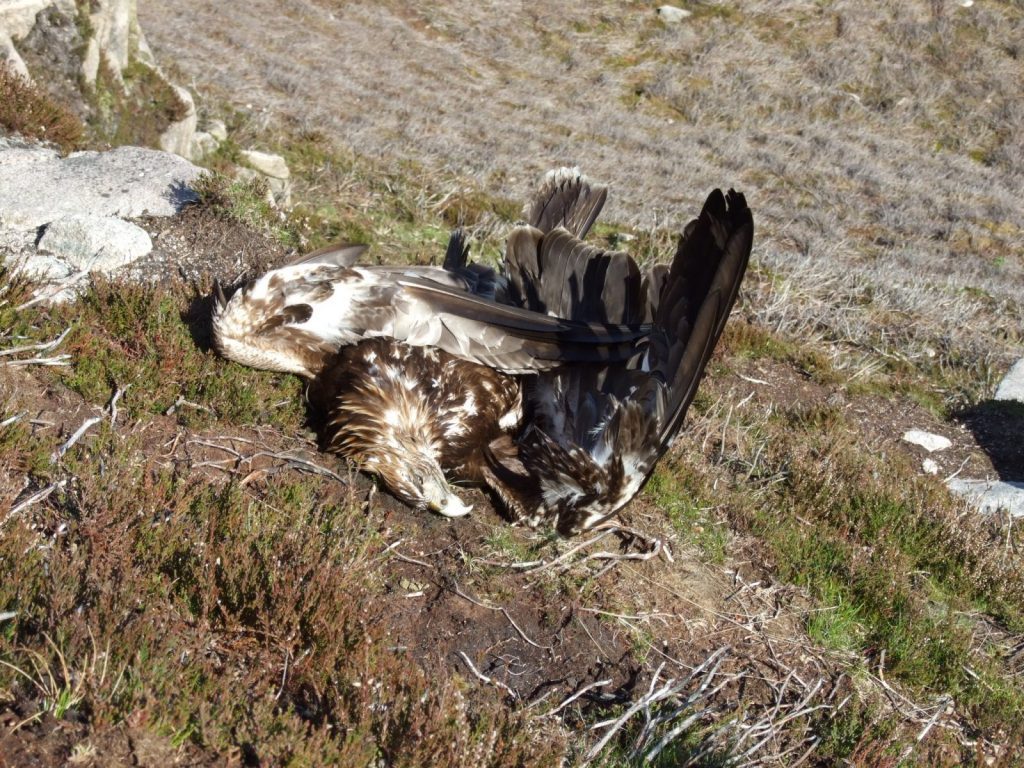At least 779 raptors killed by wildlife criminals in Scotland
RSPB Scotland has published a detailed 20 year review of the illegal killing of birds of prey in Scotland, which confirms that 779 protected raptors were illegally killed between 1994 and 2014.
In total, 468 birds of prey were poisoned, 173 were shot and 76 were caught in illegal traps. There were also seven attempted shootings. The figures include 104 red kites, 37 golden eagles, 30 hen harriers, 16 goshawks and 10 white-tailed eagles.
RSPB Scotland’s specialist investigations team has been meticulously documenting the illegal killing of birds of prey in Scotland for 20 years to provide a thorough public record of the scale, location and methods of wildlife crime. This effort, supported by an extensive body of peer reviewed science, has shown the severe impact of criminal activities on some of Scotland’s most iconic and vulnerable bird species.
The report deals only with incidents that have been confirmed as involving criminal activity, either by post mortem at a government laboratory or by reliable witnesses. The number of birds actually killed will therefore be much higher (1).
In a further 171 incidents, poison baits and/or non-bird of prey victims of poisoning were found, including 14 domestic cats and 14 dogs. There were also an additional 134 incidents where, although no victim was recovered, clear attempts had been made to target raptors – through the use of illegal traps for example.
RSPB Scotland’s review shows that over the past 20 years a significant majority of cases take place in areas associated with game-bird shooting, and in particular within upland areas managed intensively for driven grouse shooting (2). It is also noted however, that in recent years there have been some significant and welcome reductions in the number of cases reported from lowland areas of Scotland.
Director of RSPB Scotland, Stuart Housden, said: “We recognise that many landowners and their staff have helped with positive conservation efforts for birds of prey, particularly with reintroduction programmes for white–tailed eagles and red kites, and that the majority operate legitimate shooting businesses; but there are still far too many who do not act responsibly, and there will be no improvement in the conservation status of raptors until all land management is carried out wholly within the law.”
There is now well documented scientific evidence of the impact of illegal human killing on Scotland’s golden eagle, hen harrier, peregrine, and reintroduced red kite populations. The last national hen harrier survey for example showed the population had declined by 22% in Scotland between 2004 and 2010. The Joint Nature Conservation Committee Hen Harrier Framework 2011 concluded that illegal killing was having a significant impact on this species, particularly on land managed for driven grouse shooting in the southern uplands and eastern Highlands (3).
The report on illegal killing by RSPB Scotland has provided reliable data to inform Scottish Government conservation efforts for the country’s internationally important populations of birds of prey, and also re-affirms the need for continued vigilance; good wildlife protection laws; effective enforcement powers for the police; and strong sanctions in the courts to act as an effective deterrent.
Stuart Housden continued: “We welcome measures taken by the Scottish Government over the past 20 years to improve the laws protecting our birds of prey, and the recent improvements by Police Scotland and the Crown Office in tackling wildlife crime. However, our data shows that illegal killing of raptors continues to be a widespread problem in significant parts of upland Scotland. These crimes impact the natural wealth of Scotland and undermine our international reputation, wildlife tourism and diversified rural businesses.
“Scotland’s shooting industry, in contrast to the rest of Europe, has ‘light touch’ regulation and little public accountability. Self policing has been given more than a fair chance and numerous public warnings, from ministers aimed at upland sporting managers, have not been heeded. It is long overdue that sporting management should be licensed, conditional on compliance with wildlife protection laws. We encourage the Scottish Government to initiate the planned review of game-bird licensing systems in other similar countries as soon as possible so we can learn and adopt best practice to ensure a sustainable future for sports shooting.”





